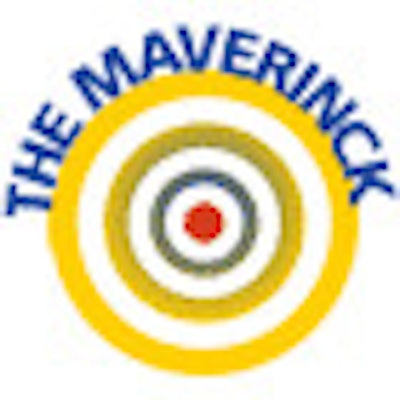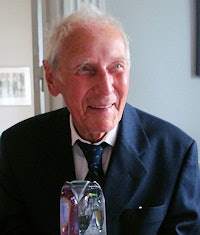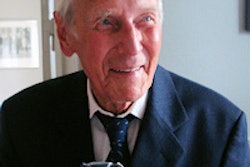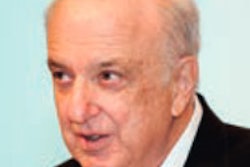
Four months ago, Dr. Erik Odeblad, PhD, celebrated his 90th birthday. He still works, although mostly in his study at home. This year is very important for him, he says, in several respects: It is 60 years since the Nobel Prize was awarded to Felix Bloch and Edward M. Purcell, the two pioneers of nuclear MR (NMR) in physics. Also, he and his wife Anne-Marie have been married for 60 years. They have four children, 10 grandchildren, and -- so far, he says -- two great-grandchildren.
Odeblad was born on 31 January 1922 in Kristinehamn, Sweden. After attending medical school in Stockholm, he started working as a physician at the Karolinska Institute in 1952. Also in 1952, he defended his first doctoral thesis. It was his 22nd publication and led to his appointment as associate professor at the Karolinska during the same year. In 1953, he was a Rockefeller Foundation Fellow at the University of California, Berkeley.
In Stanford, on the other side of San Francisco Bay, he met Felix Bloch. Odeblad asked him whether he could use his NMR spectrometer to study human samples, but Bloch's response was negative. He made it clear that NMR was a tool for physicists, not for research into physiology, medicine, or biology. Odeblad returned to Sweden and got his own machine.
 Dr. Erik Odeblad, PhD, expresses his joy after he received the 2012 European Magnetic Resonance Award.
Dr. Erik Odeblad, PhD, expresses his joy after he received the 2012 European Magnetic Resonance Award.
This sounds easy on paper, but there were no commercial NMR spectrometers at that time. If you wanted one, you had to build it yourself. Sture Forsén, a well-known Swedish professor of chemistry, remembered in a review of his professional life:
"The first two commercial NMR spectrometers arrived in Sweden in early and mid-1957. ... These instruments were actually not the first NMR spectrometers in Sweden. Dr. Gunnar Lindström of the Nobel Institute of Physics in Stockholm had, around 1950, built his own instrument. His magnet was of such good quality that he actually was one of the first, if not the first, to report proton NMR chemical shifts -- between water and CH2/CH3 groups in mineral oil. Lindström's spectrometer was later modified by a Swedish medical doctor, Dr. Erik Odeblad, who used it for his pioneering biomedical NMR applications in the mid-1950s."
In December 1954, Odeblad and Lindström submitted their first NMR results; the paper, titled "Some preliminary observations on the proton magnetic resonance in biological samples," was published in 1955 in Acta Radiologica. They had found out that different tissues had distinct relaxation times, most likely due to their water content but also to different bindings to lipids -- a phenomenon that explains tissue contrast in MR imaging. Some 60 scientific papers on MR in human tissues and secretions of mucous membranes followed between 1955 and 1968. Paul Lauterbur, PhD, who received the Nobel Prize in 2003 for his invention of magnetic resonance imaging once commented:
"The possibility of observing interactions of water with living tissues had attracted occasional investigators over the years. Perhaps the most indefatigable was Erik Odeblad, who was fascinated by the opportunities for characterizing the properties of human cells and secretions, and by the technical problems of observing NMR signals from small biological samples."
Odeblad continued his career as intern and resident in obstetrics and gynecology at the Sabbatsberg Hospital, Karolinska Institute, in Stockholm from 1954 to 1961 and stayed as research fellow of the Swedish Medical Research Council at the same institution from 1961 until 1966. During this period, Odeblad developed a method to obtain and analyze mucus produced in single crypts without contamination from other crypts in the cervix and wrote a second doctoral thesis, this time in physics. The same year, he was appointed professor of medical biophysics at the new Umeå University. He retired from this position in 1988 and remained as emeritus professor at the same department, which today is the department of medical biosciences.
Odeblad is a very humble man. Many NMR scientists did not, and still do not, know of him, because they entered the arena of medical NMR 30 or more years after Odeblad's pivotal paper. Thus, he was never included in the conferences on MRI or MR spectroscopy. This may also be connected to the topic of his research: fertility. Finding out more about the propagation of humans is not mainstream research, not being part of the three "Big C" research themes: cancer, cardiac, circulation. Thus, his research has rarely been referenced in NMR or MRI circles.
There is one person who completely avoided any citation of Odeblad's papers, but was very much aware of him. Years ago, Odeblad was contacted by a lawyer in New York. They had a 50-minute conversation. Odeblad was asked to admit that he never performed NMR studies of malignant tissue. The lawyer wrote an official legal protocol. A doctor from Brooklyn wanted to be the first in medical applications of NMR; he had jumped on the bandwagon more than 15 years after Odeblad. The American came across to some observers as an unceasing self-promoter with a grandiose sense of his own importance. He tried to play down Odeblad's achievement and put him into the shade. He nearly succeeded.
The assignment of credit on the basis of intensive publicity rather than on the basis of a fair and accurate analysis of the historical record is a growing deplorable trend in modern science.
On 25 May 2012, Dr. Erik Odeblad received the European Magnetic Resonance Award 2012 in a special ceremony in Umeå, Sweden. The two prizes -- one in Basic Science, the other in Medical Sciences -- were combined into a single one. Odeblad was not the only one with a happy face in the room; members of the Swedish scientific community attending the presentation were clearly gratified that their colleague was finally being recognized. So was his family. Better late than never.
Dr. Peter Rinck, PhD, is a professor of diagnostic imaging and the president of the Council of the Round Table Foundation (TRTF) and European Magnetic Resonance Forum (EMRF).
The comments and observations expressed herein do not necessarily reflect the opinions of AuntMinnieEurope.com, nor should they be construed as an endorsement or admonishment of any particular vendor, analyst, industry consultant, or consulting group.




















